
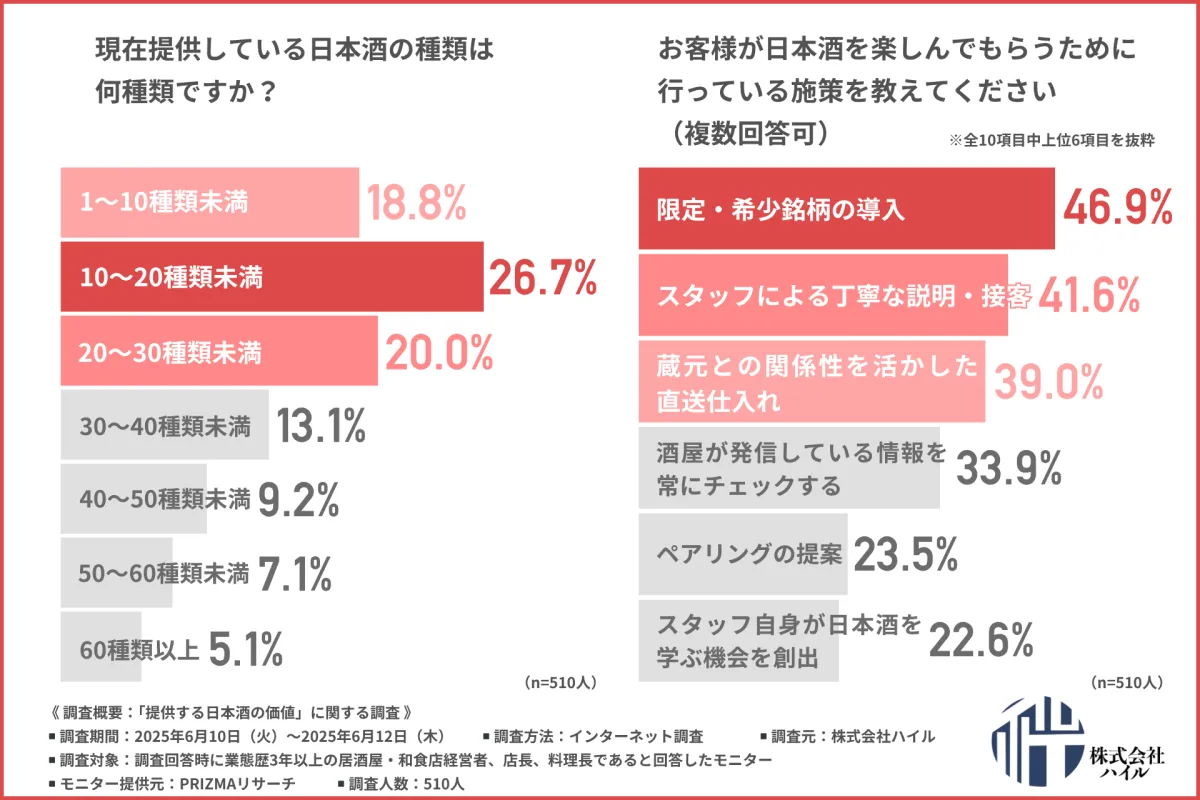
Exploring the Evolving Value of Sake at Izakayas and Japanese Restaurants
Understanding the Modern Value of Sake in Dining
In a recent survey conducted by Khairu Co., Ltd., based in Yokohama, Kanagawa, which operates the izakaya "Touji", the focus was on how Japanese izakayas and restaurants perceive and provide value through sake. With the growing popularity of sake, the restaurant industry is redefining how this beloved beverage is enjoyed and presented.
Survey Overview
The study targeted restaurant owners, managers, and head chefs with over three years in the industry, digging deep into the value they find in the sake they offer. The results reveal trends and practices that may surprise many.
Types of Sake Offered
According to the survey, most restaurants offer between 10 to fewer than 20 types of sake, indicating a balanced strategy where approximately half maintain about 20 varieties. This diversity reflects each establishment's approach and categorizes the offerings based on customer demographics and operational capabilities.
Creating Memorable Experiences with Sake
Many izakayas are adopting innovative strategies to help customers better appreciate sake. The top initiatives include:
- - Introducing Limited Edition or Rare Sake (46.9%)
- - Detailed Explanations from Staff (41.6%)
- - Direct Procurement from Breweries (39.0%)
This focus on rare selections and comprehensive customer engagement highlights the desire to communicate the uniqueness and history behind each sake, enhancing customer experiences significantly.
Highlighting Sake's Intricacies
Restaurant professionals wish diners to understand the following aspects of sake:
1. The subtlety and depth of flavor and aroma (38.4%)
2. The impact of temperature on taste (34.5%)
3. The versatility with food pairings (32.2%)
These insights emphasize the multi-dimensional allure of sake, particularly how its flavor evolves with different temperatures and complements a range of dishes, adding depth to the dining experience.
Recommendations from Experts
When asked for their top sake recommendations, izakaya owners often suggest:
- - Kubota (30s, Male, Kanagawa)
- - Dassai (40s, Male, Kanagawa)
- - Echigo Kanbai (40s, Male, Chiba)
- - Juyondai (40s, Male, Hyogo)
- - Takashimizu (40s, Male, Akita)
These brands, renowned for their exceptional quality, are praised for their taste and versatility, often suited to pair exceptionally well with various cuisines.
Overcoming Supply Challenges
Despite the desirability, obtaining popular brands like Juyondai and Dassai poses challenges:
- - Difficulties in stable supply (38.5%)
- - High prices (36.3%)
- - Insufficient procurement channels (33.3%)
These barriers reveal the practical concerns that restaurants face, where cost and supply reliability directly affect their offerings.
Customer Interest in Pairings
A significant 89.1% of respondents stated that patrons frequently ask for recommendations on excellent sake pairings with their meals. However, many establishments report limited staff capacity to provide this advice.
- - Qualified staff available for suggestions:
- 1-2 staff (52.7%)
- 3-4 staff (31.9%)
- More than 5 staff (12.1%)
This indicates that while there is a demand for pairing knowledge, the staffing situation often restricts the ability to meet it effectively.
Benefits of Pairing Proposals
Most establishments acknowledge that effective pairing recommendations significantly contribute to customer satisfaction, viewed as essential to enhancing the dining experience. High-quality pairing suggestions can establish memorable experiences that encourage repeat visits and potentially higher spending.
Conclusion
This survey sheds light on how izakayas and Japanese restaurants approach the offering of sake, revealing their efforts to communicate its value beyond mere taste. With a rich assortment of sake varieties, the emphasis on customer education, and thoughtful pairing initiatives, these venues are crafting an experience far more profound than just enjoying a beverage. For those who love sake, choosing establishments dedicated to providing knowledgeable insights about their offerings can lead to a delightful exploration of this cultural treasure.
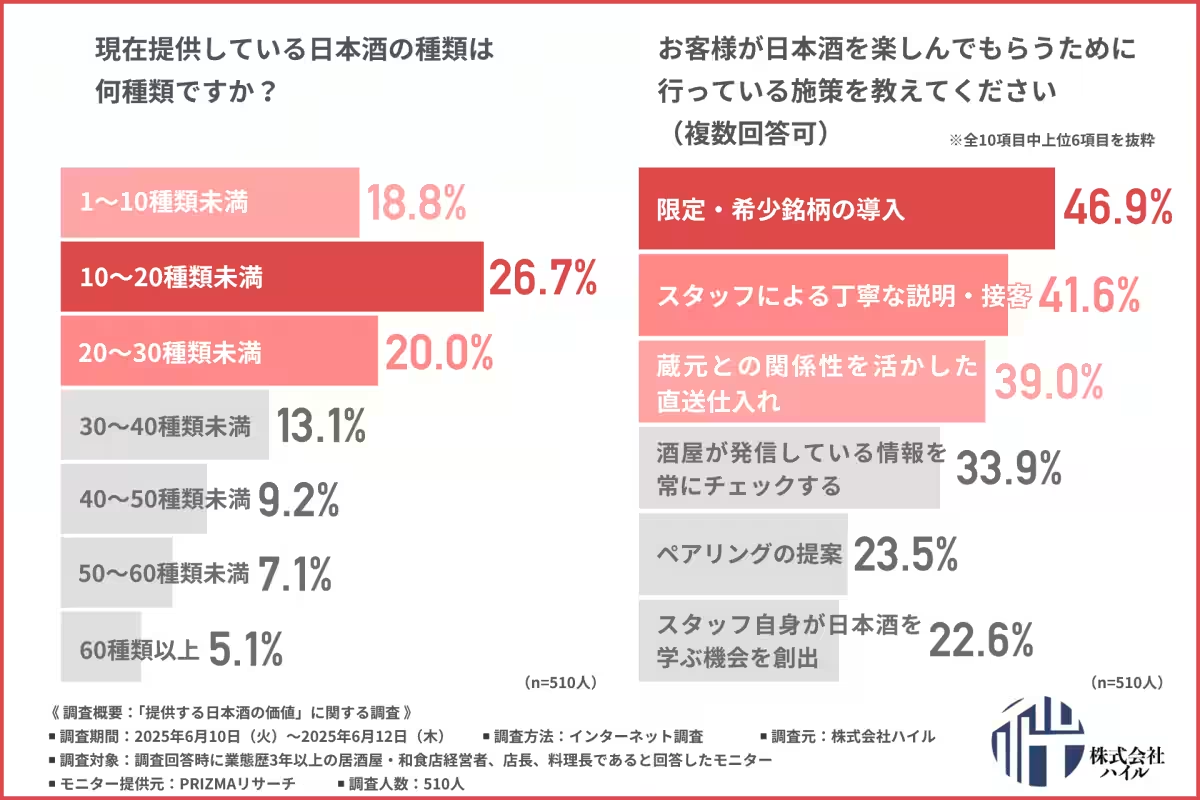
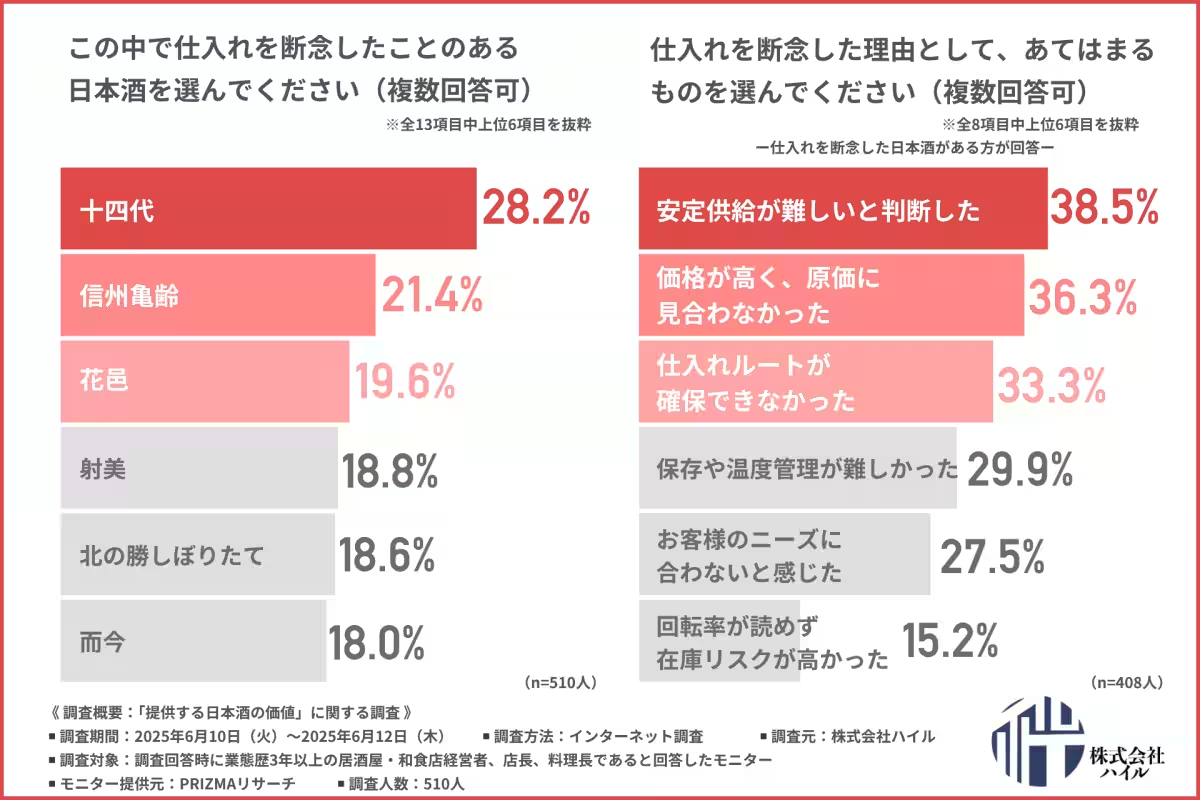
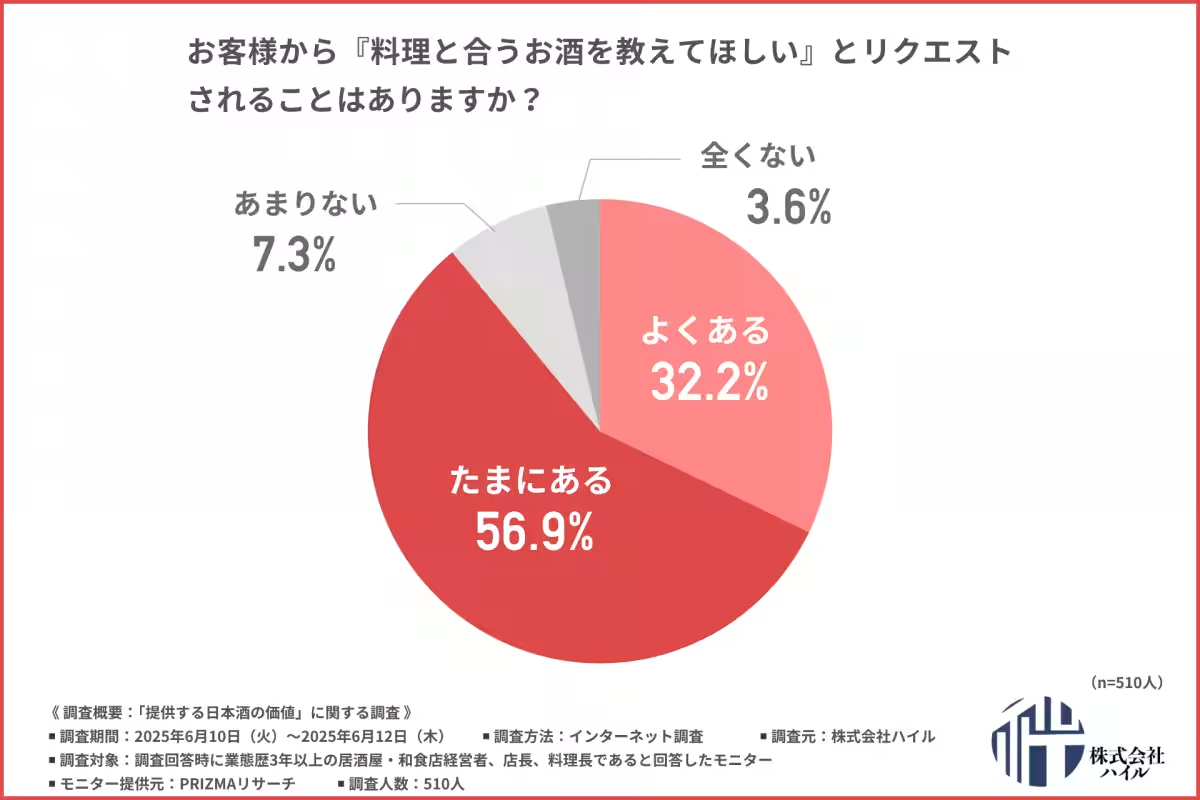
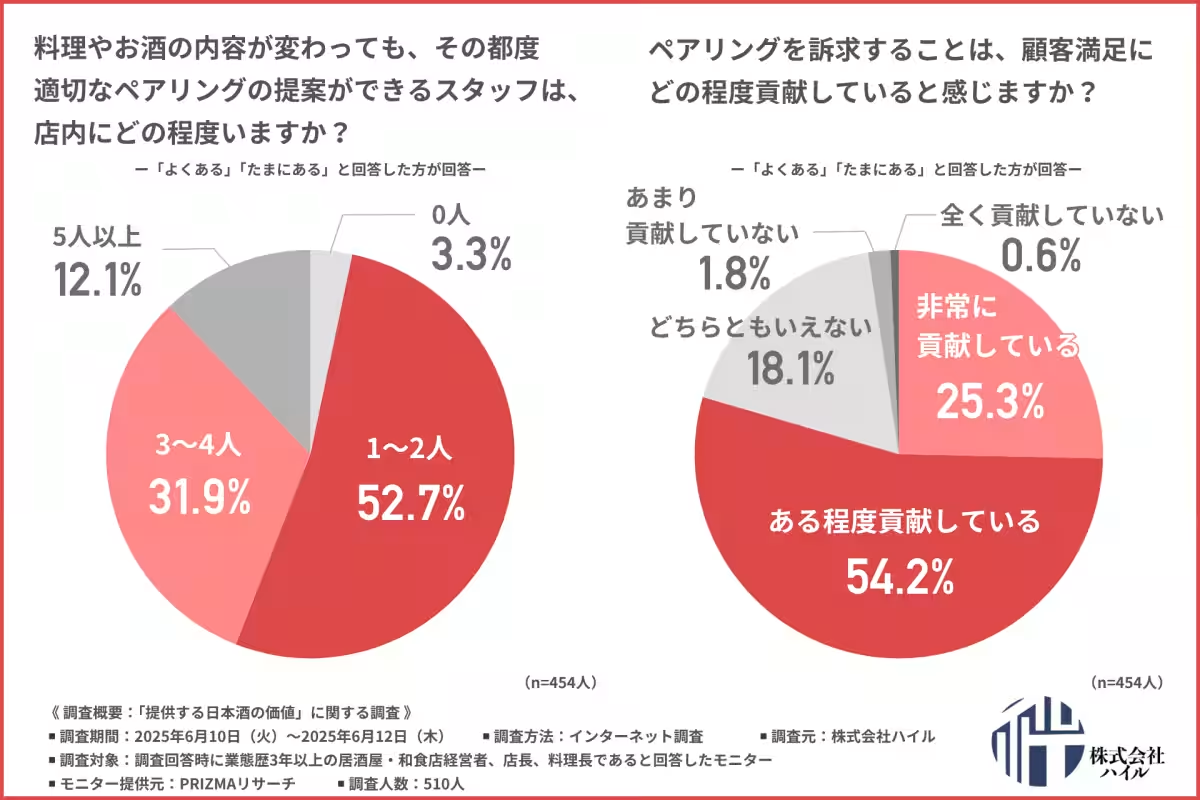
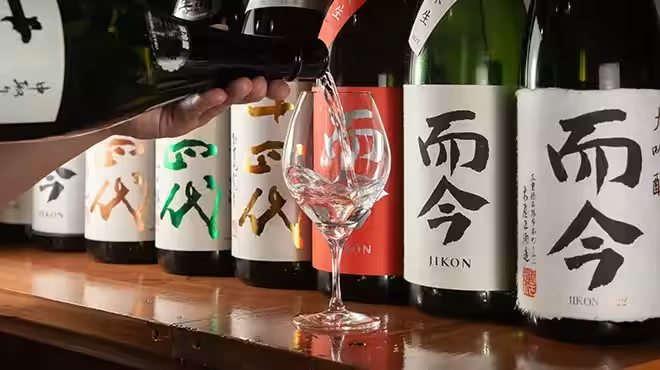
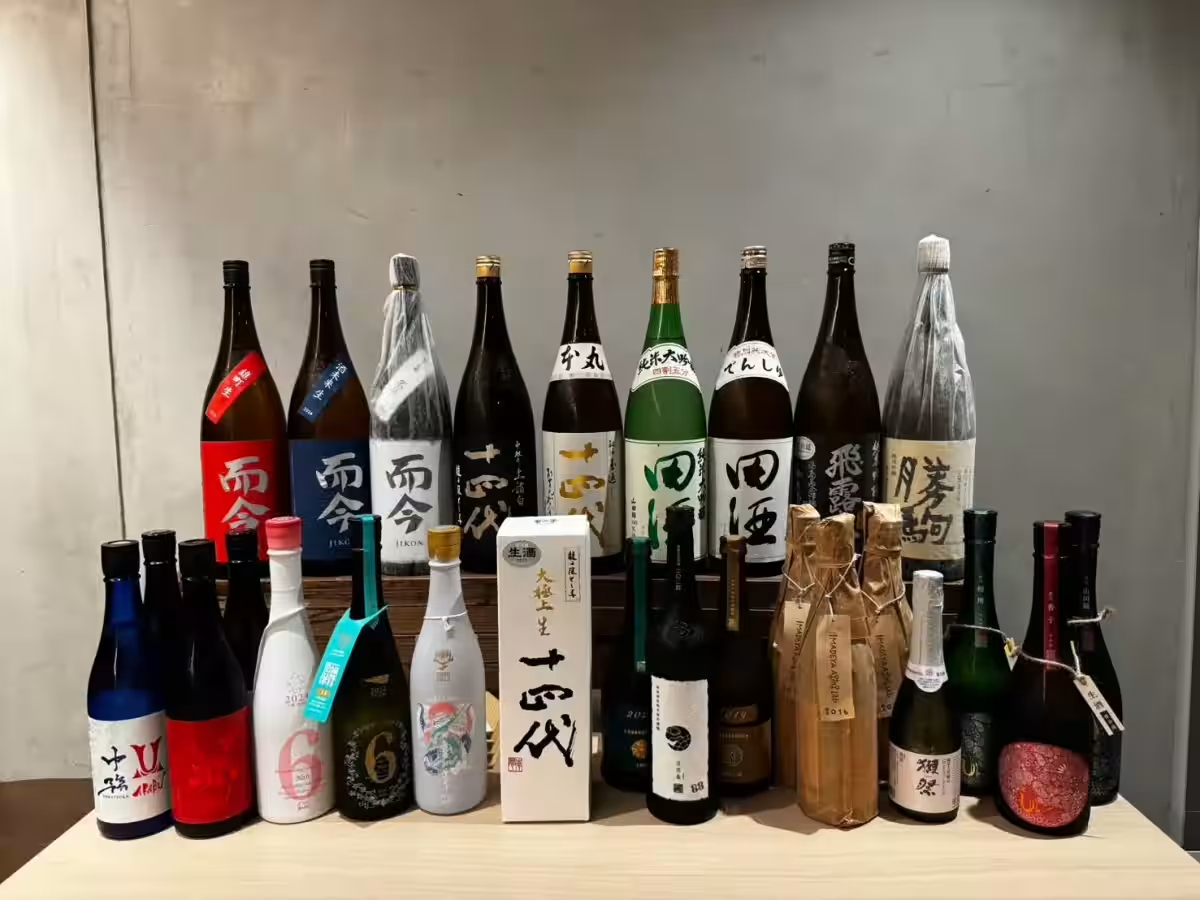

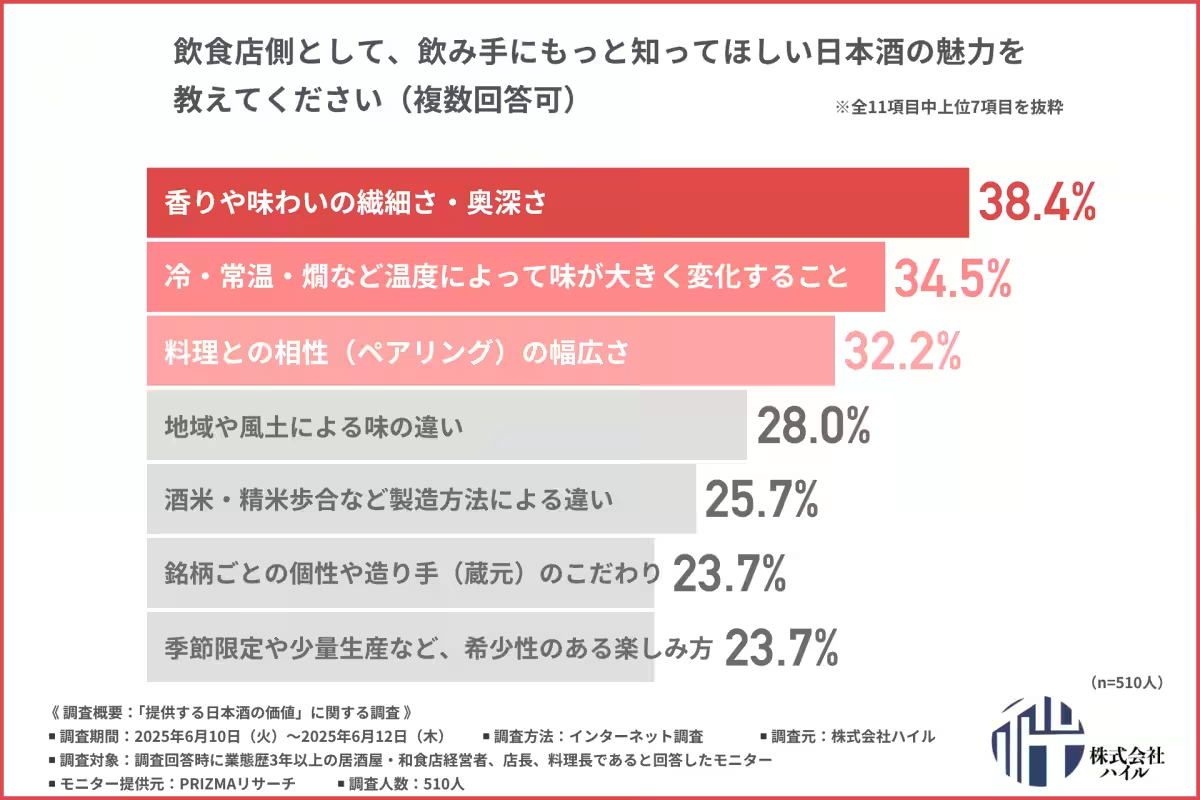
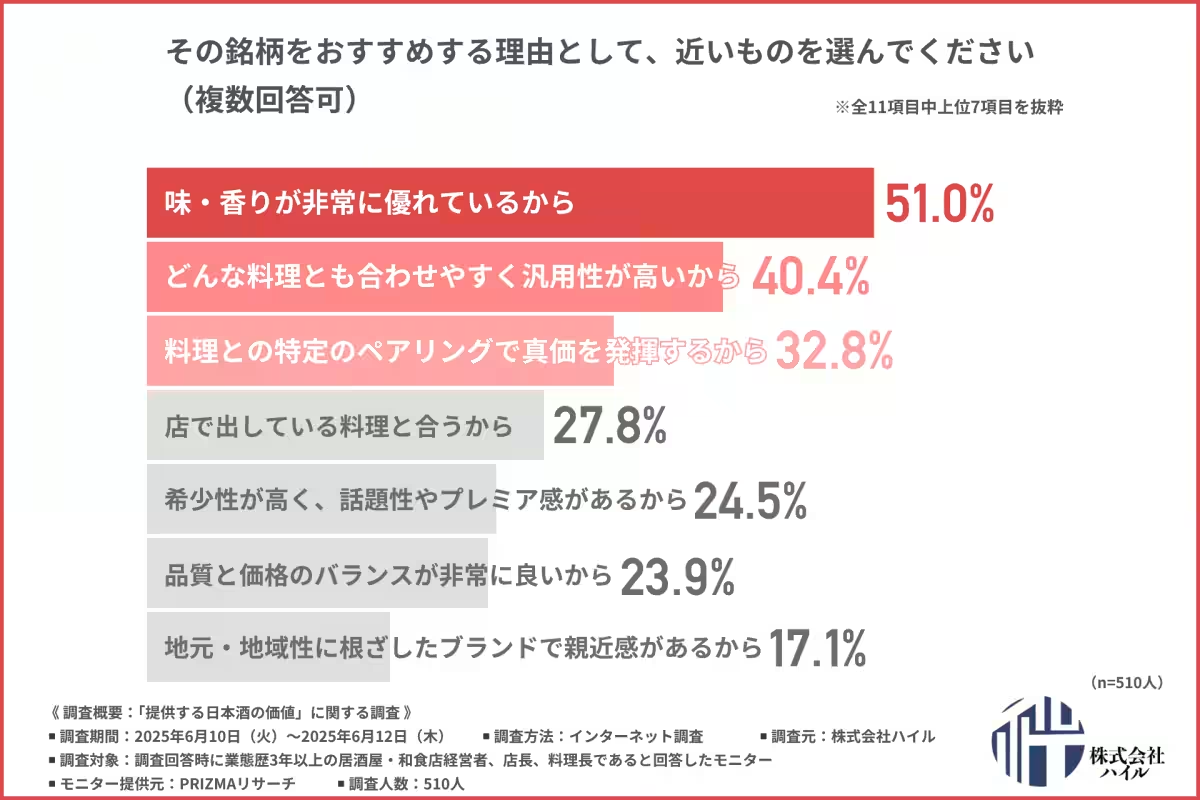
Topics Consumer Products & Retail)










【About Using Articles】
You can freely use the title and article content by linking to the page where the article is posted.
※ Images cannot be used.
【About Links】
Links are free to use.